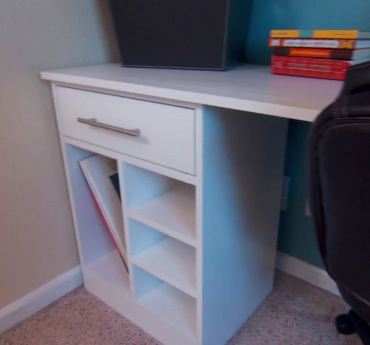
build your own desk with simple cpu base cabinet plans from ana-white.com
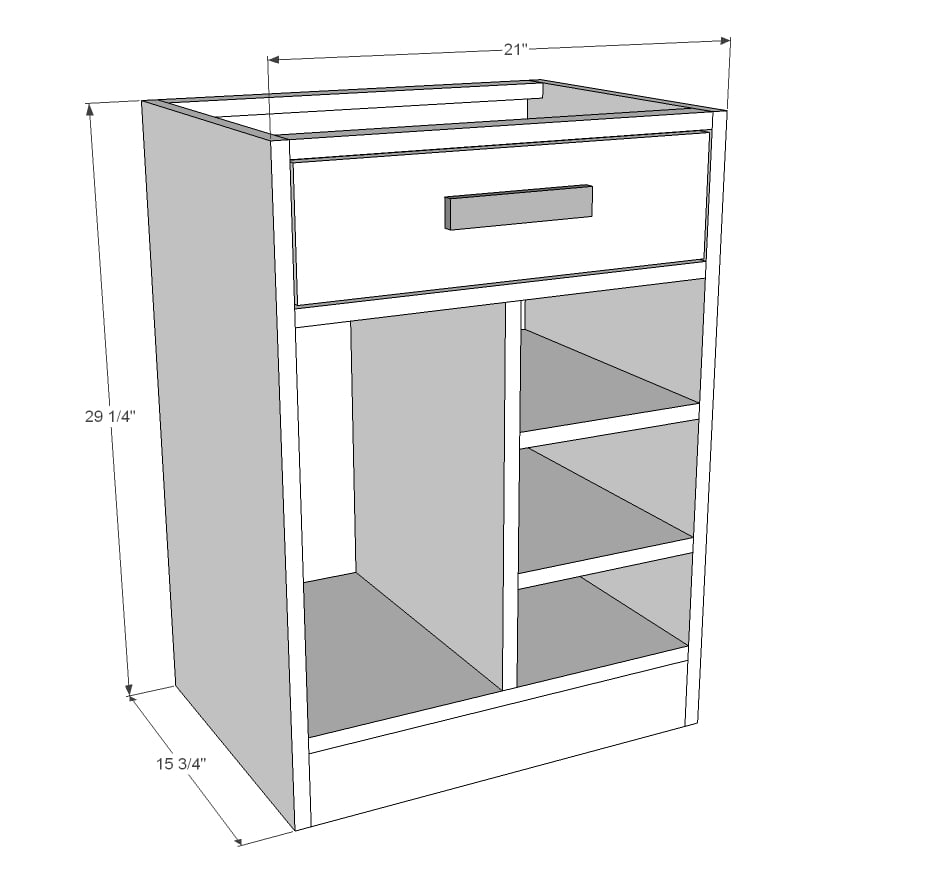
Preparation
10 feet of 3/4" plywood, 15-3/4" wide (about 1/2 a sheet)
1 - 1x4 @ 10 feet long
1 - 1x2 @ 6 feet long
1 - 1x6 @ 2 feet long
1/4" plywood for back is optional
16" bottom corner mount euro style drawer slides (white)
knob or handle
2 - 3/4" plywood @ 15-3/4" x 29-1/4" (sides)
2 - 1x4 @ 19-1/2" (bottom footers)
1 - 3/4" plywood @ 15-3/4" x 19-1/2" (shelf)
1 - 3/4" plywood @ 15-3/4" x 17-3/4" (divider)
2 - 3/4" plywood @ 15-3/4" x 9-1/4" (cubby shelf)
4 - 1x2 @ 19-1/2"
DRAWER
2 - 1x4 @ 16" (drawer sides)
2 - 1x4 @ 17" (drawer front/back)
1 - 1/4" plywood @ 18-1/2" x 16" (bottom)
1- 1x6 @ 19-1/4" (drawer face)
Rip 3/4" plywood into strips 15-3/4" wide the long way. From these strips, cut all 15-3/4" wide pieces by cross cutting.
Please read through the entire plan and all comments before beginning this project. It is also advisable to review the Getting Started Section. Take all necessary precautions to build safely and smartly. Work on a clean level surface, free of imperfections or debris. Always use straight boards. Check for square after each step. Always predrill holes before attaching with screws. Use glue with finish nails for a stronger hold. Wipe excess glue off bare wood for stained projects, as dried glue will not take stain. Be safe, have fun, and ask for help if you need it. Good luck!
Instructions
Step 1
Step 2
Step 3
Step 6
Step 7
Attach drawer face to drawer with 1-1/4" finish nails and glue. Also add a few 1-1/4" screws (we just used pocket hole screws) to ensure drawer face doesn't come off.
TIP: You may wish to install handle/knob before attaching to drawer face.
For the top, we used an 1" thick pine panel piece that spanned the entire length of the room, screwed through the 1x2s in the base.
It is always recommended to apply a test coat on a hidden area or scrap piece to ensure color evenness and adhesion. Use primer or wood conditioner as needed.


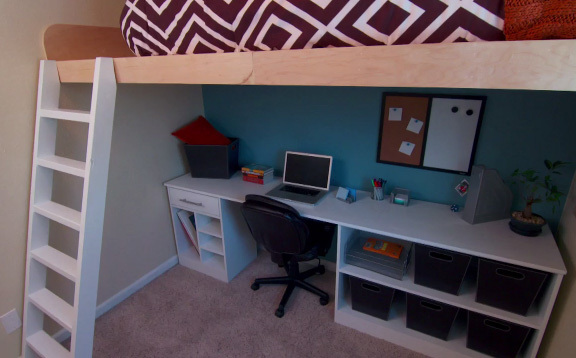
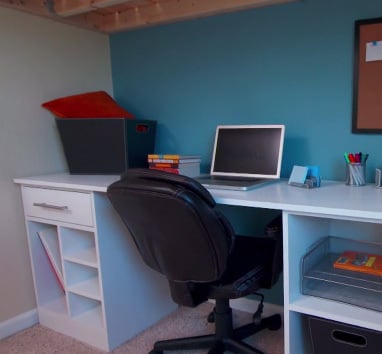
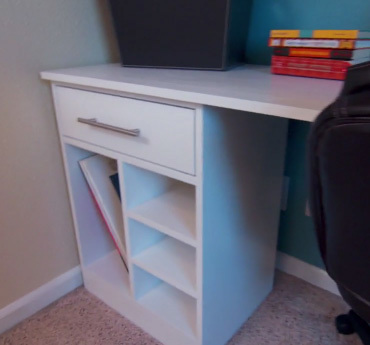
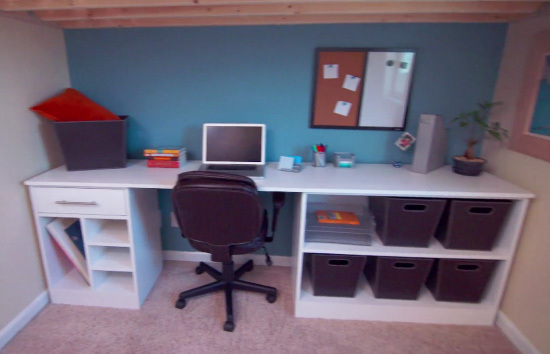













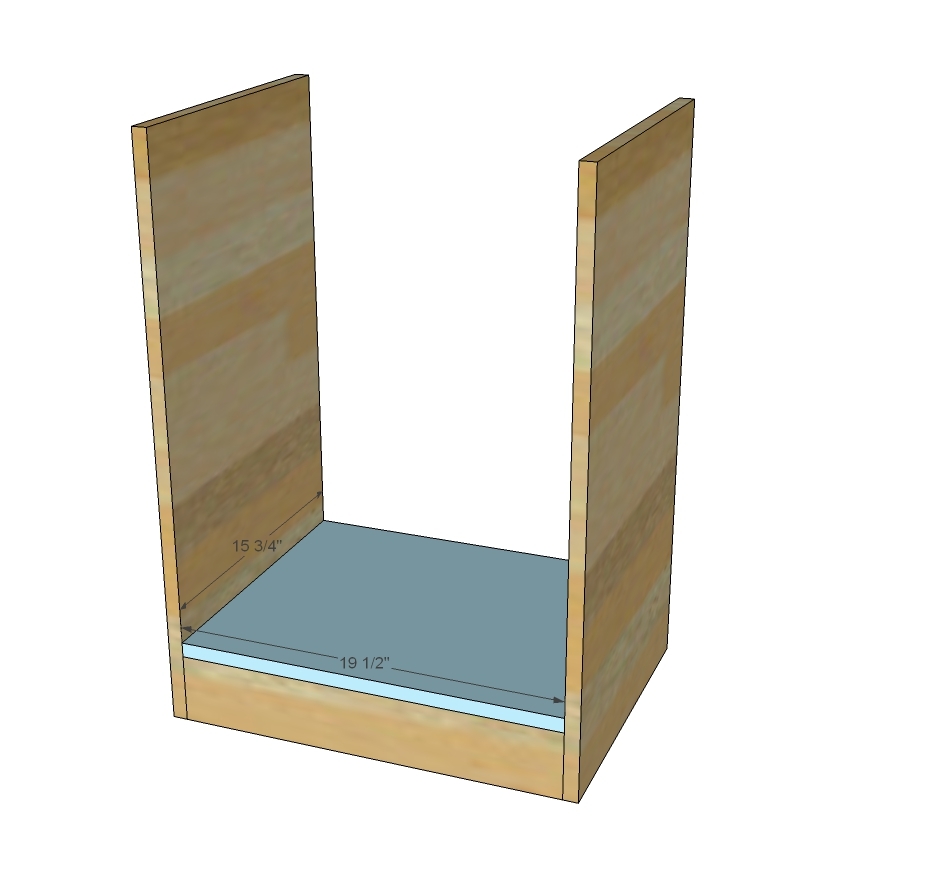
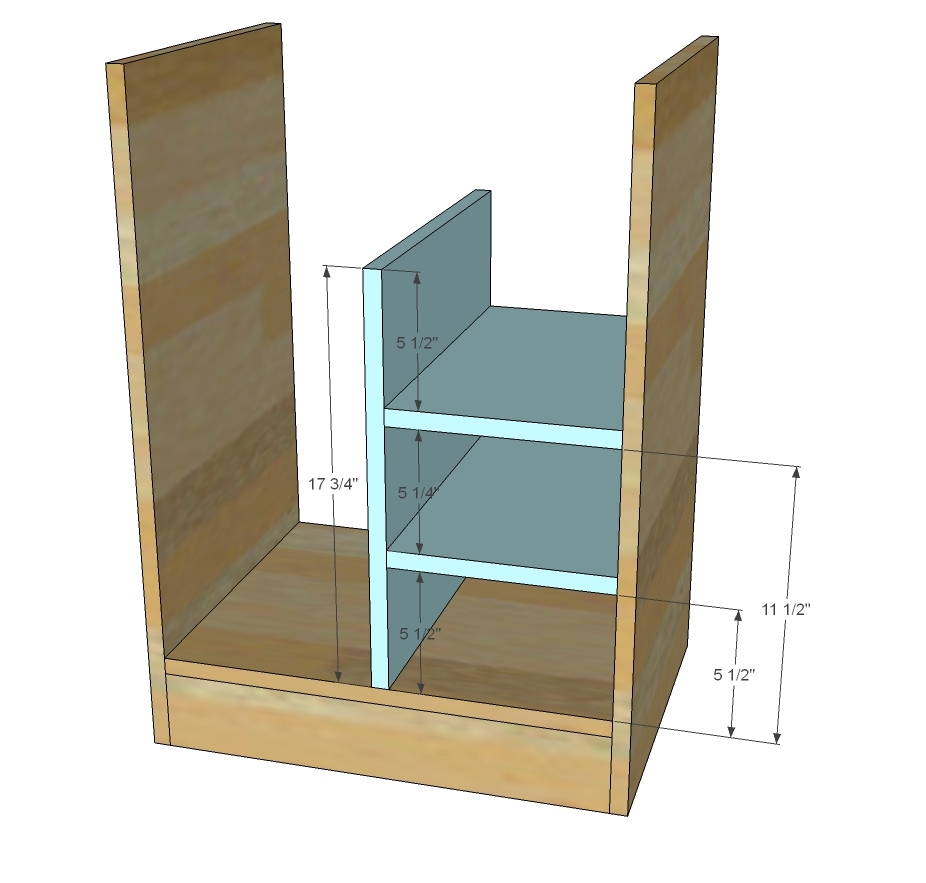



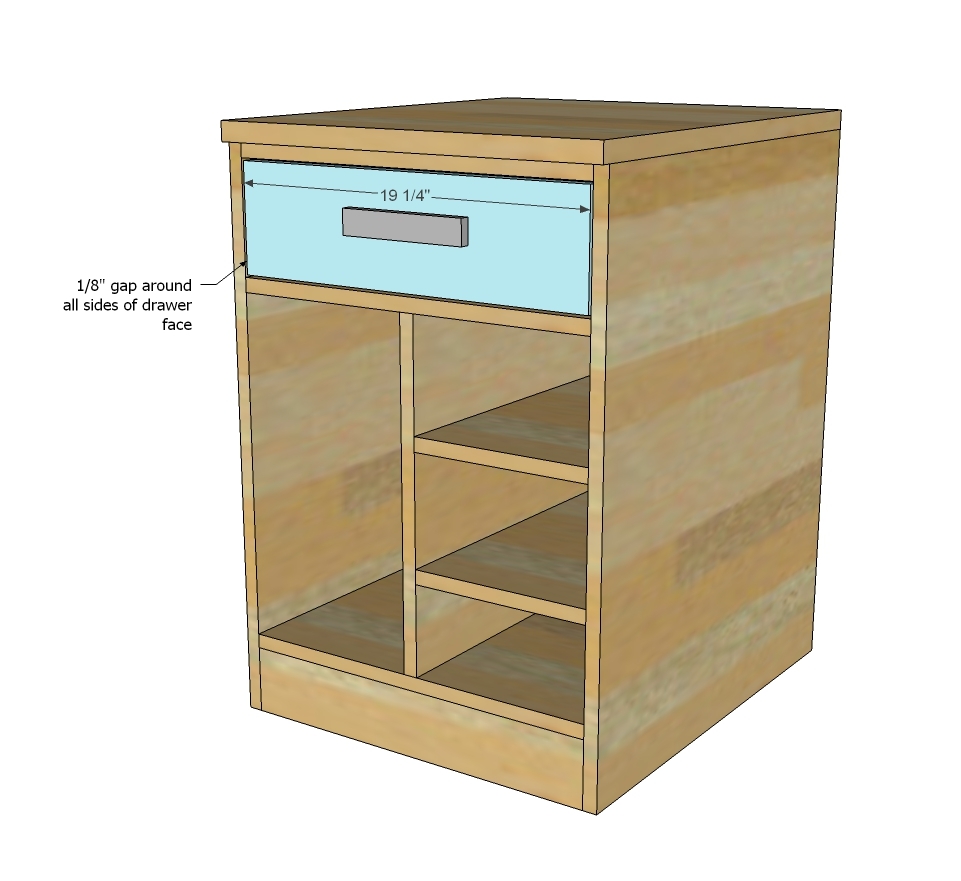
Comments
EternalOptimist
Wed, 08/06/2014 - 06:47
Air Flow
Please remember to place your computer case so that the side with the air vents (if any) is *not* against an interior wall of this enclosure. Also, do not build this with a backer piece so that your computer will be able to exhaust its hot air properly. I know Ana's build allows for all of this, but sometimes we tweak plans; I just don't want anyone to unknowingly fry their system trying to build it better/smaller/stronger! :-)
BlessingsBe
Sat, 02/17/2018 - 14:48
Missing/broken PDF link for this plan
The PDF for this plan is either missing or the link is broken. Any chance you can make the PDF available? Thanks!